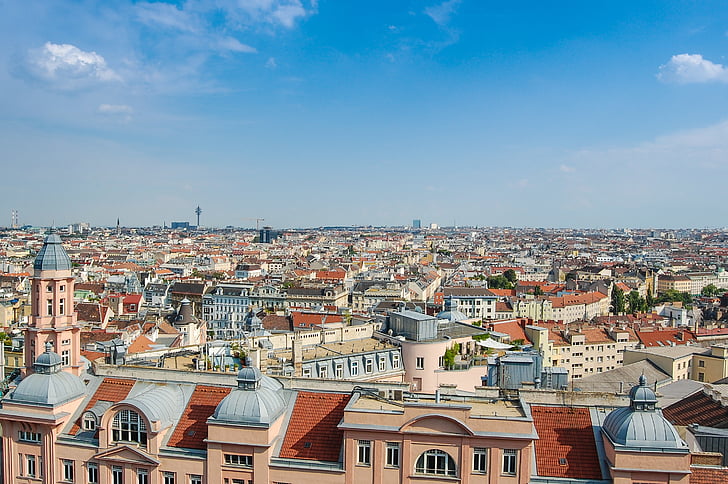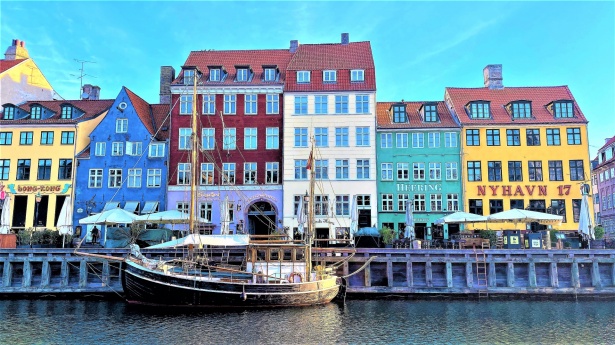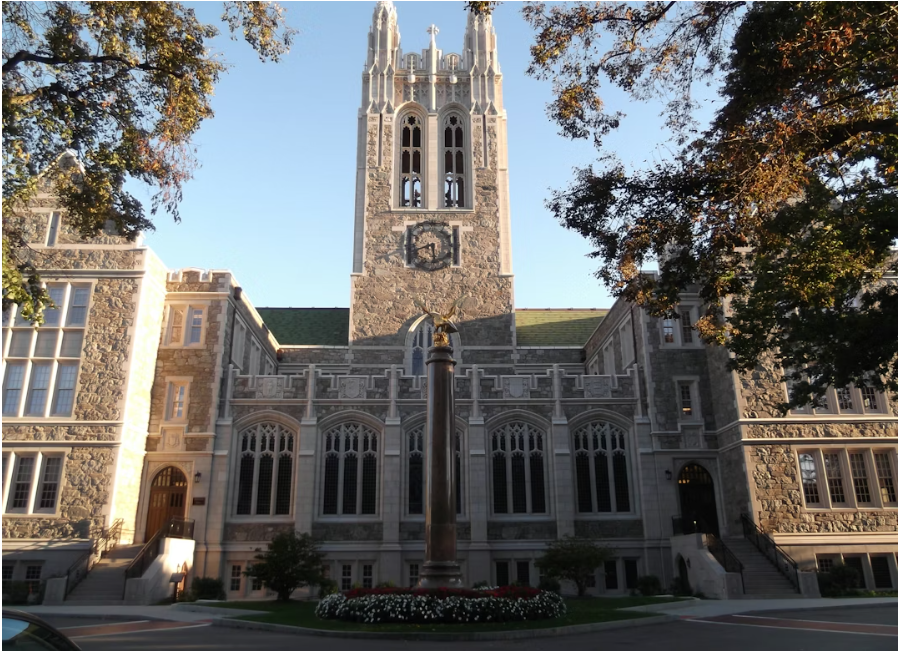The safest and most dangerous countries in Europe are essential to understand whether you’re planning a holiday, moving abroad, or comparing long-term living options. Although Europe is widely seen as one of the world’s safest regions, safety levels can vary greatly from one nation to another. Some countries consistently rank among the most peaceful, while others experience higher crime rates, social unrest, or regional tensions. Drawing on the latest Global Peace Index, Eurostat statistics, and leading travel-risk assessments, this guide provides an updated overview of the 10 safest countries in Europe and some most dangerous countries in Europe for 2025.
How We Determine Safety and Danger in Europe?
The Global Peace Index (GPI) and Safety Score serve as crucial indicators for measuring national security and peace. Compiled by the Institute for Economics and Peace (IEP), the GPI ranks 163 countries by assessing factors including public order, domestic and international conflicts, and military strength, with lower scores indicating greater security and peace. The Safety Score reflects residents’ and visitors’ sense of security, taking into account crime rates, political stability, and personal safety. To supplement the GPI, we also reference official European Union statistics (Eurostat), including homicide rates, violent and property crimes, and residents’ perceptions of safety. Furthermore, government travel advisories and real-time risk reports—such as those concerning terrorist attacks or demonstrations—provide additional safety benchmarks. By synthesising this information, we can comprehensively evaluate the security landscape across European nations.
Top 10 Safest Countries in Europe
| Country | Global Peace Index Score | Europe Rank | World Rank |
|---|---|---|---|
| Iceland | 1.095 | 1 | 1 |
| Ireland | 1.26 | 2 | 2 |
| Austria | 1.294 | 3 | 4 |
| Switzerland | 1.294 | 3 | 4 |
| Portugal | 1.371 | 4 | 7 |
| Denmark | 1.393 | 5 | 8 |
| Slovenia | 1.409 | 6 | 9 |
| Finland | 1.42 | 7 | 10 |
| Czechia | 1.435 | 8 | 11 |
| Netherlands | 1.491 | 9 | 12 |
Iceland
Since 2008, Iceland has consistently ranked first in the Global Peace Index (GPI), widely regarded as one of the world’s safest, happiest and most stable nations. As the sole NATO member state without a standing army, navy or air force, Iceland’s social order relies scarcely on military might. Instead, it is founded upon a high degree of social trust, robust political institutions and a mature rule of law. This foundation results in Iceland boasting an exceptionally low crime rate, firmly placing it among the countries with the lowest crime rate globally. It ranks among the world’s least corrupt nations. The Iceland Review notes that violent crime is virtually non-existent, with an average of just two homicides per year over the past three decades. Petty crime remains rare nationwide, particularly outside the capital, Reykjavík, further underscoring the pervasive nature of the country’s secure environment.
Regarding natural risk management, Iceland maintains sophisticated early warning systems that rigorously monitor extreme weather, seismic activity, and volcanic eruptions. Coupled with a high-quality healthcare system, this ensures comprehensive safety for both residents and visitors. Furthermore, the World Happiness Report ranks Iceland as the third-happiest nation globally. Assessing multiple indicators, including the Human Development Index, subjective well-being, healthcare and education standards, and legal order, Iceland undoubtedly stands as the safest country in Europe and one of its most livable.
Ireland
Ireland is regarded as the second-safest country in Europe. The nation boasts social stability, low crime rates, a friendly populace, and a robust political environment, with virtually no risk of natural disasters. Its public transport system is reliable, minor offences such as pickpocketing and robbery occur infrequently, while violent crime is exceptionally rare. The Irish authorities actively uphold public safety, making the country exceptionally well-suited for solo travellers.
The capital, Dublin, is renowned for its vibrant cultural life and welcoming locals. Statistics reveal Ireland’s homicide rate stands at just 0.5 per 100,000 residents – significantly below the EU average of 0.86 and markedly lower than the United States’ rate of 6 per 100,000. According to the Organisation for Economic Co-operation and Development (OECD), approximately 76% of Irish residents report feeling safe walking alone at night. While minor offences occasionally occur in bustling metropolitan areas, such incidents remain relatively uncommon. City centres historically associated with security concerns have seen significant improvements. Overall, Ireland ranks not only among Europe’s safest nations but also stands as an ideal destination for solo travellers and female visitors.

Austria
Austria ranks third among the safest European countries, owing to its stable political system, rigorous legal framework, and efficient law enforcement apparatus, which collectively foster a climate of public security and societal order. In 2025, Austria’s homicide rate stood at approximately 0.61 per 100,000 inhabitants, ranking among Europe’s lowest levels and demonstrating its strength in controlling serious violent crime. Whilst petty offences such as pickpocketing and property theft occasionally occur in tourist-heavy, densely populated areas, efficient policing ensures residents and visitors generally feel secure. The Austrian government prioritises social stability, ensuring harmony and order through stringent firearms regulations, a robust legal framework, and extensive social support networks. Concurrently, Austria’s comprehensive welfare system provides cradle-to-grave security for all residents, enhancing public confidence and establishing the nation as an ideal destination for both living and travel.
Switzerland
Switzerland is a safe country in Europe, and its safety is reflected not only in an orderly society but also in concrete data. According to the Swiss Federal Statistical Office (FSO) 2024 data, there were 563,633 registered criminal offences nationwide, with serious violent crimes remaining very low. The homicide rate stands at approximately 0.6 per 100,000 people, demonstrating Switzerland’s firm control over serious violent crime. Overall, public safety in Switzerland is excellent, and people can feel secure walking or spending time outdoors at any hour, even in remote areas. While property crimes, such as pickpocketing and burglary, occasionally occur in cities and tourist-heavy areas, most incidents pose minimal threat, and the efficient policing system ensures that both residents and visitors generally feel safe. Switzerland’s long-standing policy of neutrality, combined with a comprehensive legal framework, strict law enforcement, and extensive social support networks, effectively maintains national security and social stability. Furthermore, the country’s well-developed social welfare system provides protection for residents from cradle to grave, enhancing public confidence and making Switzerland an ideal place to live and travel.
Portugal
Portugal is generally considered a safe country for residents and travellers. In the 2025 Global Peace Index, Portugal ranks fourth among Europe’s safest nations, trailing only Iceland, Denmark, Ireland and Austria. In recent years, Portugal has also been regarded as a ‘haven of tranquillity’. The country’s political climate has remained stable for many years, free from significant social unrest, laying the foundation for national security and harmony. Portugal’s crime rate ranks among the lowest in Europe, with violent crime being particularly rare. Data indicates Portugal occupies 29th place in Europe’s homicide rankings, significantly below many developed nations. Although public opinion on the National Republican Guard (GNR) and Public Security Police (PSP) varies, the low crime rate demonstrates the effectiveness of their work. Furthermore, Portuguese residents generally demonstrate a willingness to cooperate with the police, providing community policing leads, thereby enhancing public safety.

Denmark
Scandinavian nations have consistently ranked among the world’s safest countries, maintaining top-ten positions across indicators such as quality of life, education, healthcare, security, and overall well-being. The Global Peace Index ranks Denmark as the fifth-safest European country, while the Women, Peace, and Security Index ranks it fourth, owing to its low crime rates, high public satisfaction, and low risk levels. It also features within the top twenty of the Perceived Safety Index, which measures citizens’ and residents’ sense of security across five key domains: health, violence, workplace, personal safety, and environment. Copenhagen ranks among Europe’s safest cities, securing eighth place globally in the Economist Intelligence Unit’s Global Cities Safety Index.
Slovenia
Slovenia is widely recognised as one of the safest countries in Europe, consistently ranking in the global top tier for peace and security. In the 2025 Global Peace Index, Slovenia achieved a score of 1.409, placing it firmly within the world’s safest nations. The country’s crime levels remain exceptionally low, with an estimated 0.5 homicides per 100,000 people, far below the European and global averages. Public safety perception is also high, as most residents report feeling safe walking alone both during the day and at night. Slovenia’s strong institutional trust, political stability, and effective law enforcement further enhance its overall security, while its clean environment and high living standards contribute to a comfortable and reliable lifestyle. Together, these factors make Slovenia an ideal destination for travellers, international students, and anyone seeking a peaceful and secure place to live.
Finland
Finland has been ranked among the world’s safest countries by the United Nations for seven consecutive years. In the 2025 Global Peace Index, Finland achieved a score of 1.420, firmly securing its position as Europe’s safest country. Violent crime is exceedingly rare, and Finland maintains exceptionally high standards of public safety, reflected in its security rating of 92/100 in the 2024 Expat Guide. Compared to many other European nations, Finland experiences significantly lower levels of street crime, such as theft and pickpocketing. Finnish cities, including Helsinki, frequently feature among the world’s safest urban centres. The country’s political stability, reliable law enforcement, transparent institutions, and high-quality public services further enhance its overall security. Coupled with an exceptional healthcare system and robust social security framework, Finland offers residents and visitors a secure, predictable, and comfortable environment.
Czechia
The Czech Republic is regarded as one of the safest countries in the EU, owing primarily to its low crime rate, social stability, and well-developed public infrastructure. According to the Global Peace Index 2025, the Czech Republic exhibits comparatively low levels of violent crime and terrorist threats within Europe, maintaining generally good social order. Its capital, Prague, has long been ranked among Europe’s safest major cities for visitors, with most neighbourhoods offering peace of mind for walking both day and night, alongside secure and reliable public transport and urban facilities. The Czech Republic’s stable political environment, robust legal framework, and well-developed public services and healthcare system further enhance the sense of security for both residents and visitors. While vigilance against pickpocketing and petty property crime remains advisable in popular tourist areas, the country’s low-risk profile, high stability, and favourable living conditions collectively position it among Europe’s safest nations. This makes the Czech Republic an ideal choice for both tourism and long-term residence.
Netherlands
The Netherlands ranks among the safest European countries, positioned tenth on the continent, with its security advantages manifesting across multiple dimensions. Firstly, crime rates remain low; according to Eurostat data, the Netherlands records merely 470 criminal incidents per 100,000 inhabitants, significantly below the EU average of 670. Secondly, police coverage is high, with approximately 320 officers per 100,000 residents – markedly above the EU average. The community policing model has effectively enhanced residents’ sense of security in both urban and rural areas. The Netherlands also leads in cybersecurity, with the National Cyber Security Centre (NCSC) combating cybercrime and data breaches through legal and technical measures. A comprehensive social welfare system narrows the wealth gap, reduces social inequality, and lowers crime risks stemming from economic pressures. Robust healthcare, education, and unemployment benefit schemes further enhance public satisfaction, thereby fostering social stability and harmony. Overall, low crime rates, high police coverage, robust information security, and comprehensive social safeguards collectively position the Netherlands as one of Europe’s safest places.
The Most Dangerous Countries in Europe
While Europe is generally considered one of the safest regions in the world, safety levels vary significantly from country to country. No European nation compares to high-risk conflict zones elsewhere, yet certain countries face more safety challenges due to urban crime, social unrest, political tensions, and other factors. The Global Peace Index 2025 highlights the most dangerous countries in Europe, like Belarus, Ukraine and Russia.
Russia
Russia is the most dangerous country in Europe, presents significant risks for travellers due to a combination of political, social, and security factors. Heightened geopolitical tensions, particularly with neighbouring countries and NATO members, increase the risk of sudden border restrictions, airspace closures, and government-imposed travel warnings. Within the country, political protests are sometimes met with strict law enforcement, and independent journalists or foreign visitors may face scrutiny. Urban crime, including pickpocketing and scams in major cities like Moscow and St. Petersburg, adds another layer of risk. Travel to Russia requires heightened awareness of both political developments and local security conditions.
Ukraine
Ukraine stands as one of the dangerous countries in Europe, with the ongoing armed conflict since Russia launched its special military operation in 2022, rendering the security situation across the country extremely grave. Missile strikes, drone attacks and artillery bombardments persistently threaten civilian areas. Reports from the Institute for the Study of War (ISW) indicate Russian forces frequently test NATO’s boundaries, with the vicinity of Kyiv being particularly hazardous. The conflict has caused severe damage to infrastructure, disrupting essential services such as electricity, water supply and healthcare. Landmines and unexploded ordnance pose additional threats in rural areas and combat zones. Beyond the battlefield, border instability and internal displacement heighten travel risks, while urban areas face prominent issues of pickpocketing, fraud, and human trafficking. Ukraine ranks in the lower-middle tier of the Numbeo Crime Index, with thousands of cases annually involving women deceived into labour or surrogacy. Given the ongoing conflict and comprehensive security risks, international security agencies strongly advise against all non-essential travel to Ukraine.
Belarus
Belarus is considered the least safe country in Europe because of political instability and strict government control. Since 2020, the country has seen widespread crackdowns on opposition movements, independent media, and public protests. Arbitrary arrests, aggressive policing, and limited access to information create a challenging environment for visitors. In addition, corruption and uneven law enforcement increase the likelihood of encountering scams or unfair treatment. Travellers should be extremely cautious, especially when near demonstrations or in areas known for political unrest, as safety cannot be reliably guaranteed.
Is Europe Still Safe Overall?
Europe is generally recognised as a safe region in the world, particularly in Western and Central European countries, where stable public order and well-developed infrastructure make them popular choices for travel and residence. However, certain Eastern European regions present security risks; for instance, Russia and Ukraine are not recommended due to ongoing localised conflicts. Beyond these areas, most European nations boast low rates of violent crime, along with comprehensive public transport, healthcare, and policing systems, as well as highly developed tourist infrastructure. When travelling, the primary concerns are pickpocketing and petty scams at popular attractions, which can generally be avoided by maintaining basic vigilance. Overall, provided standard safety precautions are taken, Europe remains a safe, welcoming region suitable for travel and residence for most people.
Tips for Staying Safe in Europe
Staying safe in Europe hinges largely on preparation and awareness. Beyond knowing which countries rank highest in global safety indices, understanding local conditions and cultivating sensible travel habits are equally vital. Below are the most practical recommendations to heed when travelling or residing long-term in Europe:
1. Look Beyond National Safety Rankings
While national safety rankings provide a helpful overview, the safety level can vary significantly from one city to another. Whether you’re travelling short-term or planning a longer stay, it’s important to research city- or neighbourhood-level crime data, public transport safety, and real experiences shared by travellers and international students.
2. Keep an Eye on Real-Time Travel Alerts
Europe is generally stable, but short-term risks can still arise due to political events, extreme weather, strikes, or public safety incidents. Checking government travel advisories, local news, and airline or railway updates can help you adjust your plans and avoid unexpected disruptions.
3. Follow Basic Travel Safety Practices
Even in the safest countries, staying aware of your surroundings is essential. Keep valuables out of sight, avoid poorly lit or isolated areas at night, use licensed taxis or official transportation, and learn about common local scams—simple precautions like these can prevent most issues.
4. For Long-Term Stays: Prioritise Countries With Strong Institutions
For relocation or extended stays, choose countries with political stability, strong public services, high-quality healthcare, and low corruption levels. These nations typically offer faster emergency response, higher social trust, and a more secure everyday environment, making them ideal for expats and international students.
Conclusion
Overall, Europe remains one of the safest regions in the world, though security conditions vary significantly across the continent. Iceland, Ireland, Austria, Switzerland, and Portugal consistently rank among Europe’s safest nations, whereas Russia and Ukraine pose extremely high travel risks due to ongoing regional conflicts and should be avoided. Whether planning a holiday, studying abroad or considering long-term relocation, it is essential to research the security situation in each European country thoroughly.
FAQs
Yes, many European countries are safe for solo female travellers, like Iceland, Finland, Denmark, and Austria. They also have good public services, so if you need help, you can get it easily.
Iceland, Denmark, Ireland, Austria, Switzerland, Finland, Portugal, Slovenia, Czechia, and the Netherlands are the safest countries in Europe. These countries boast stable political environments, advanced economies, low crime rates, and generous social welfare systems, providing a solid foundation for security.
Iceland has consistently ranked as the safest country in Europe for several consecutive years, and is also regarded as one of the safest countries in the world.
Portugal is widely regarded as the most friendly country in Europe, with locals renowned for their warm hospitality and willingness to lend a helping hand.
Ukraine and Russia rank as the most dangerous countries in Europe. Both nations are experiencing ongoing armed conflicts and heightened regional tensions. Critical risk factors include severely damaged infrastructure, a prolonged state of crisis, and a consequent breakdown of public security and services.
Yes. Most travellers need health insurance when visiting Europe. If you are entering the Schengen Area, Schengen travel medical insurance is mandatory, covering at least €30,000 for emergency medical care and repatriation. Even for non-Schengen countries, having travel health insurance is strongly recommended because medical costs, emergencies, and hospital treatments can be expensive.






